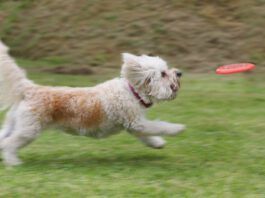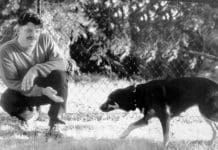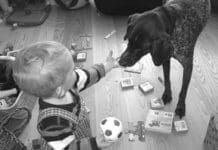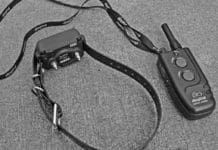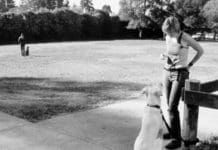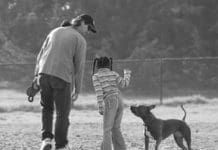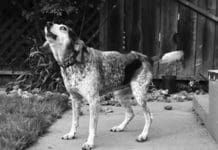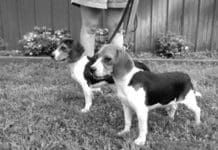Is Your Dog Bullying Other Dogs?
You can find them everywhere at dog parks and doggie daycare centers, in dog training classes, in your neighbor's yards ... perhaps even in your own home. They" are canine bullies dogs who overwhelm their potential playmates with overly assertive and inappropriate behaviors
Understanding Dog Appeasement Signals
Paradigm shifts in the dog-training world in the last decade have led dog owners and trainers to pay closer attention to the observation, interpretation, and understanding of canine body language.
Help Your Shy Dog Gain Confidence
he needs more distance between himself and strangers.üCarefully engineer any opportunities for your dog to gain positive experiences with strangers; exploit his love of treats!"
The Canine Shock Collar Debate
The chasm between those who abhor the electronic/shock collars as an abusive dog training tool and those who support and promote it as an exceptionally effective and humane training tool is so huge it will probably never be bridged. In more moderate positions in the middle of that chasm are those who believe that the collar can be an effective training tool for very limited circumstances in the hands of skilled professionals, and those who prefer not to use them but feel compelled to educate clients who insist on using them on how to use them properly.
Runaway Dog: Preventing Your Dog From Escaping
How to safely confine burrowers, bounders, beavers, and bolters. Otis the Bloodhound was an opportunistic escapee. I discovered his talent one day while working at the front desk at the Marin Humane Society, early in my animal protection career. A woman came in asking if we might know where a Bloodhound lived, because he kept visiting her house every day. He was charming, she said, but she worried that he might get hit by a car.
Establishing a Good Bite Inhibition
Animal care professionals are fond of saying, “All dogs will bite, given the right (wrong) circumstances.” If that’s the case, how have I managed to suffer only two punctures in a 30-plus-year career working with dogs? Partly through reading and responding to canine body language well enough to avoid provoking an attack (see “How to Save Yourself,” September 2005). Partly, I’m sure, through luck. But largely, I suspect, because many dogs possess a wonderful quality known as “bite inhibition.”
Understand Why Your Dog Growls
Clients always appear a bit stunned at first when I tell them their dog's growl is a good thing. In fact, a growl is something to be greatly treasured. These are my aggression consultation clients, who are in my office in desperation, as a last resort, hoping to find some magic pill that will turn their biting dog into a safe companion. They are often dismayed and alarmed to discover that the paradigm many of us grew up with punish your dog harshly at the first sign of aggression has contributed to and exacerbated the serious and dangerous behavior problem that has led them to my door.
Save Yourself in a Dog Attack
The tragedy of the 12-year-old boy killed by his family’s Pit Bulls in San Francisco once again highlights the importance of providing information that will help people survive such dog attacks – and perhaps the need for laws that encourage and require dog owners to be responsible for their dogs. Any large, powerful breed of dog will, occasionally, cause serious injury, even death. Small dogs can certainly bite, too, though they normally have less potential to do serious harm (the Pomeranian who killed a six-week-old infant in California in 2000 notwithstanding).
What Different Dog Barks Mean
While dogs are primarily body language communicators, they also use their voices to share information with other members of their social group. Compared to their wild brethren, however, our domesticated dogs use their voices far more a tendency we have genetically encouraged. We've created herding breeds, including Shelties, Border Collies, Welsh Corgis, and others, who use their voices when necessary to control their flocks. We've bred scent hounds to give voice when they are on the trail of prey.
Your Dog’s Ability to Track Scents
Humans have taken advantage of dogs' incredibly keen sense of smell over the ages for such uses as hunting, tracking lost and fugitive humans, and more recently, the detection of bombs, narcotics, and other contraband. It's well known that a dog's nose is many times sharper than our own estimates range from 10,000 to 100,000 times superior to ours, with a far greater number and variety of scent receptors in their noses, more neurons linking the nose to the brain, and a greater proportion of their brains devoted to smell.
When Your Dog Hates Being Touched
not training. Proceed more slowly
Rage Syndrome in Dogs
The term rage syndrome" conjures up mental images of Cujo



